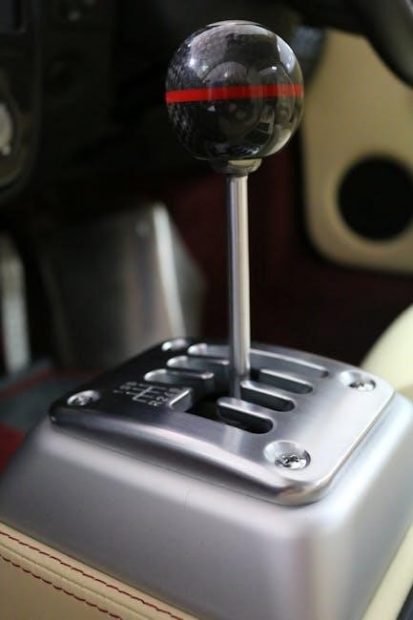Understanding the intricacies of Mercury throttle systems is vital for optimal outboard performance․ Proper adjustment ensures smooth operation, preventing issues like stalling or limited RPMs․
Understanding the Importance of Proper Adjustment
Precise throttle adjustment is paramount for a Mercury outboard’s reliable function and longevity․ Incorrect settings can manifest as several performance problems, including an inability to reach full RPMs, difficulty maintaining a consistent idle speed, or even engine stalling when the throttle is engaged․ A stiff or binding throttle cable is another common symptom of improper adjustment, hindering smooth operation and potentially causing operator fatigue․
Furthermore, correct adjustment directly impacts fuel efficiency and reduces unnecessary wear and tear on engine components․ Ensuring the throttle linkage is properly aligned and the cable tension is optimal prevents strain on the carburetor and throttle plate, contributing to a longer engine lifespan․ Neglecting these adjustments can lead to costly repairs and diminished boating enjoyment․ Therefore, understanding and implementing proper procedures is crucial for every Mercury outboard owner․
Brief Overview of Mercury Outboard Systems
Mercury outboard motors encompass a diverse range, from compact 8hp four-stroke models to larger, more powerful engines․ Regardless of size, they share core components related to throttle control․ These systems typically utilize a throttle cable connected to a throttle linkage, which in turn operates the carburetor’s throttle plate․ The idle adjustment screw plays a critical role in regulating low-speed engine operation․
Modern Mercury outboards often feature sophisticated fuel injection systems, but the fundamental principles of throttle control remain consistent․ Understanding the specific configuration of your engine – whether it’s a carburetor or fuel-injected model – is essential for accurate adjustment․ Proper function relies on a smooth, responsive connection between the throttle lever, cable, linkage, and carburetor, ensuring precise control over engine speed and power․
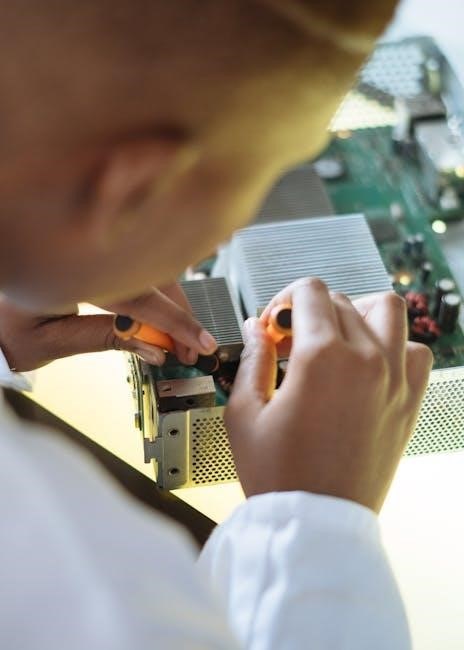
Throttle Control System Components
Essential parts include the throttle cable, linkage, idle adjustment screw, and the carburetor’s throttle plate; each component works in harmony for precise engine control․
Throttle Cable and its Function
The throttle cable serves as the crucial link between the control lever—typically located on the boat’s steering console—and the carburetor or throttle body on the Mercury outboard engine․ Its primary function is to transmit the operator’s throttle input, converting hand or foot movements into mechanical action․ This cable, often encased in a protective sheath, stretches and retracts to open and close the throttle plate within the carburetor․
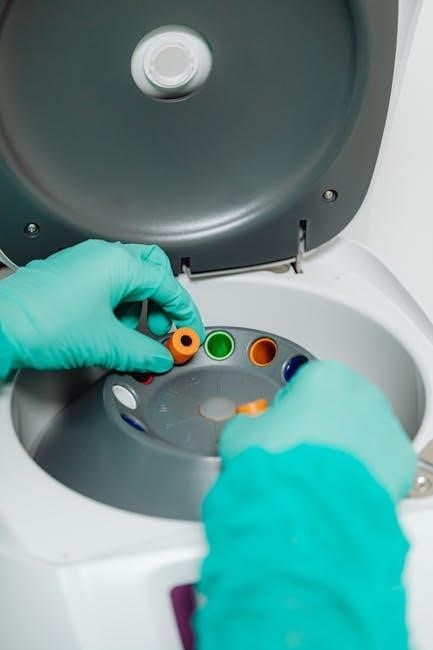
A properly functioning throttle cable is paramount for responsive engine control․ Stiffness or binding within the cable can lead to delayed responses, difficulty achieving full throttle, or even erratic engine behavior․ Regular inspection for fraying, kinks, or corrosion is essential․ Ensuring the cable moves freely within its sheath is vital for smooth operation and preventing potential mechanical failures․ Adjustment of the cable tension is often necessary to maintain optimal performance, as detailed in the Mercury service manuals․
Throttle Linkage Explained
The throttle linkage is a system of rods, levers, and pivots that translates the throttle cable’s movement into the opening and closing of the carburetor’s throttle plate․ This linkage ensures precise control over the air-fuel mixture entering the engine, directly impacting engine speed and power output․ It’s designed to maintain a direct and responsive connection, minimizing any lost motion․
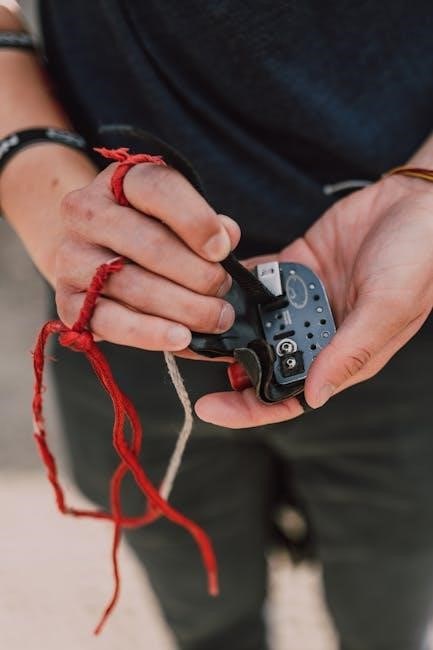
Proper linkage geometry is critical; any misalignment or excessive play can cause inaccurate throttle control and performance issues․ The linkage must allow the throttle plate to fully open and fully close without obstruction․ Lightly pushing the end of the throttle link towards the front of the engine and tightening the screw secures its position․ Regular inspection for wear, looseness, and proper lubrication is essential for smooth, reliable operation, as outlined in Mercury’s documentation․
Idle Adjustment Screw – Purpose and Location
The idle adjustment screw regulates the amount of air bypassing the throttle plate when it’s closed, controlling the engine’s idle speed․ This screw is crucial for establishing a stable and consistent idle, preventing stalling or excessively high idle RPMs․ Its location varies depending on the Mercury outboard model, but it’s typically found on the carburetor body, near the throttle linkage․
Fine-tuning this screw is essential after any throttle cable adjustment․ Turning the screw clockwise generally increases idle speed, while counterclockwise decreases it․ Avoid over-tightening, as this can damage the carburetor․ The goal is to achieve a smooth idle without the engine dying or running too fast․ Refer to your specific Mercury outboard’s service manual for precise location and adjustment procedures, ensuring optimal performance․
Carburetor and Throttle Plate Connection
The carburetor’s throttle plate directly controls airflow into the engine, dictating power output․ The throttle cable, via the linkage, physically rotates this plate․ When the plate opens, more air mixes with fuel, increasing engine speed․ A precise connection between the throttle cable, linkage, and throttle plate is paramount for responsive and accurate control․
Ensuring the linkage isn’t binding or excessively loose is critical․ Any slack in the system translates to delayed response․ The throttle plate must fully close when the throttle is in the idle position, allowing the idle adjustment screw to function correctly․ Conversely, it must fully open when the throttle is at full travel․ Inspect for worn or damaged components within this connection, as they can significantly impact performance and safety․
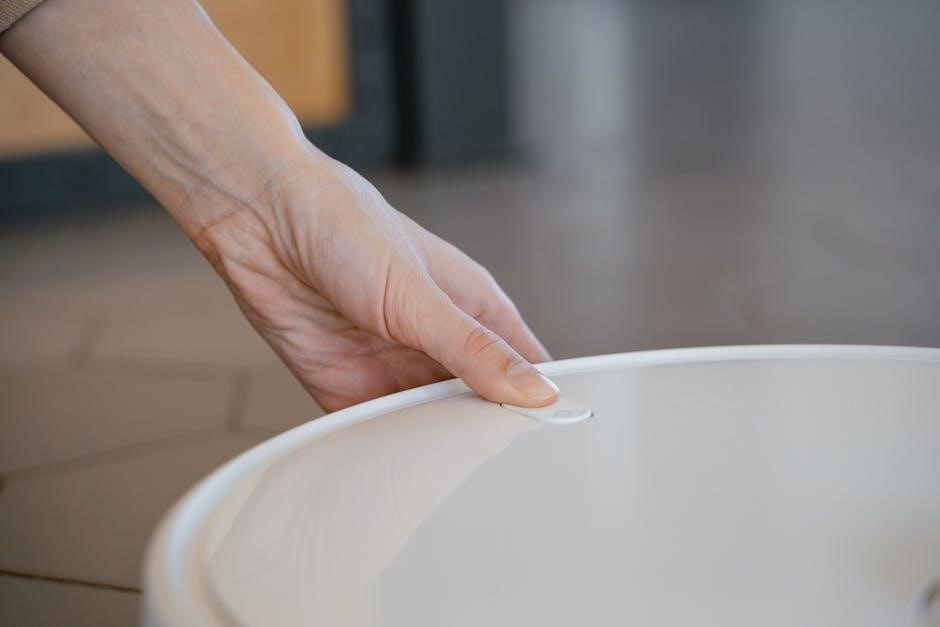
Troubleshooting Common Throttle Issues
Diagnosing throttle problems involves checking for full RPM achievement, idle stability, cable stiffness, and addressing engine stalling when applying throttle—key indicators of system faults․

Engine Won’t Reach Full RPM
If your Mercury outboard fails to achieve its maximum rated RPM, several factors within the throttle control system could be responsible․ A primary suspect is insufficient throttle cable travel; ensure the cable isn’t binding and that it’s fully engaging the carburetor linkage․ Inspect the throttle linkage itself for any obstructions or loose connections that might restrict its movement․
Furthermore, a misadjusted throttle cable can limit the carburetor’s ability to open fully․ Carefully examine the cable tension and adjust it according to the manufacturer’s specifications․ Don’t overlook the idle adjustment screw, as improper settings can indirectly affect full throttle performance․ A clogged carburetor or issues with the fuel delivery system can also mimic throttle-related problems, so a thorough inspection of these components is recommended․ Finally, verify that the propeller is correctly sized and in good condition, as propeller issues can also limit engine speed․
Difficulty Maintaining Idle Speed
Experiencing an unstable or fluctuating idle speed on your Mercury outboard often points to issues within the throttle control and fuel delivery systems․ The idle adjustment screw is the primary control for setting the correct idle speed; ensure it’s properly adjusted according to the engine’s specifications․ A vacuum leak in the intake manifold or carburetor can also cause idle instability, requiring a careful inspection of all connections․
Furthermore, a dirty or clogged carburetor can disrupt the fuel-air mixture, leading to idle problems․ Inspect and clean the carburetor thoroughly․ Check the throttle linkage for any binding or looseness, as this can interfere with smooth idle operation․ A faulty throttle position sensor (if equipped) can also contribute to idle issues․ Finally, ensure the choke is functioning correctly, as a partially engaged choke can cause a high or unstable idle․
Throttle Cable Feels Stiff or Binding
A stiff or binding throttle cable significantly impacts control and can indicate internal corrosion or damage․ Begin by disconnecting the cable at both the throttle lever and the carburetor linkage to isolate the issue․ Inspect the cable for kinks, bends, or fraying along its entire length․ Lubricate the cable thoroughly with a marine-grade cable lubricant, working it into the sheath to reduce friction․
If lubrication doesn’t resolve the stiffness, the cable may be internally corroded and require replacement․ Ensure the cable routing is correct, avoiding sharp bends or obstructions․ Check the throttle linkage at the engine for binding or misalignment․ A properly functioning cable should move smoothly and freely throughout its range of motion, providing responsive throttle control․ Ignoring a binding cable can lead to further damage and safety concerns․
Engine Dies When Throttle is Applied
An engine that stalls or dies when the throttle is advanced often points to a fuel delivery problem or incorrect carburetor adjustment․ First, verify the fuel line isn’t kinked and the fuel filter is clean․ A clogged filter restricts fuel flow, causing the engine to starve when demand increases with throttle application;
Next, inspect the carburetor for debris or obstructions in the jets․ A lean fuel mixture can cause stalling; ensure the idle mixture screw is properly adjusted․ Check the throttle linkage for full and unrestricted movement, confirming it fully opens the carburetor throttle plate․ If the issue persists, a faulty fuel pump or a vacuum leak could be the culprit, requiring further diagnosis․ Addressing these issues ensures consistent fuel delivery and prevents engine shutdown․

Mercury Throttle Cable Adjustment Procedures
Precise cable adjustment is key for smooth operation․ Begin with a thorough inspection, then adjust tension and fine-tune the idle screw for optimal performance․
Initial Inspection of the Throttle System
Before commencing any adjustment, a meticulous inspection of the entire throttle system is paramount․ Begin by visually examining the throttle cable for any signs of fraying, kinking, or corrosion․ Ensure the cable moves freely within its sheathing without binding․ Next, inspect the throttle linkage at both the engine and control box ends, verifying all connections are secure and exhibit no excessive play․
Confirm the throttle plate within the carburetor opens and closes smoothly and completely throughout its range of motion․ Check that the idle adjustment screw is present and not damaged․ Observe whether the throttle linkage butts up tightly against its stopping point when the throttle is fully closed․ Any deficiencies discovered during this initial inspection must be addressed before proceeding with adjustments to guarantee a successful outcome and prevent further complications․ A careful assessment now saves potential headaches later․
Adjusting the Throttle Cable Tension
To adjust throttle cable tension, locate the adjustment barrel on the throttle control box or near the engine-mounted cable bracket․ Loosen the locking nut securing the barrel, then rotate the barrel to increase or decrease cable tension․ Rotating the barrel clockwise typically increases tension, while counterclockwise decreases it․
The goal is to eliminate any slack in the cable while ensuring the throttle plate doesn’t remain slightly open at idle․ Lightly push the throttle linkage towards the front of the engine and tighten the securing screw․ Recheck that the throttle still touches the idle adjustment screw when in the fully closed position․ Avoid over-tightening, as this can cause the engine to run hot or bind the throttle․ Fine-tune the barrel until smooth, responsive throttle operation is achieved․
Fine-Tuning the Idle Adjustment Screw
The idle adjustment screw controls the engine’s minimum RPM when the throttle is in the closed position․ Locate this screw on the carburetor – its position varies by model․ Turning the screw clockwise generally increases idle speed, while counterclockwise decreases it․
Start the engine and allow it to warm up․ Slowly adjust the screw in small increments, listening for changes in engine speed․ Aim for a stable idle that prevents stalling but doesn’t allow the engine to race․ Use a tachometer for precise adjustment, referencing your engine’s specifications for the correct idle RPM․ Avoid over-tightening, which can damage the carburetor․ After adjustment, recheck throttle cable tension to ensure proper operation․
Checking for Full Throttle Range of Motion
Confirming full throttle range is crucial for achieving maximum engine power․ With the engine off, fully depress the throttle lever․ Visually inspect the carburetor linkage to ensure it reaches its maximum open position; The throttle plate inside the carburetor must be fully open, without any obstruction or binding․
If full range isn’t achieved, re-examine the throttle cable and linkage for proper connection and adjustment․ Ensure the cable isn’t frayed or kinked․ Lightly push the end of the throttle link towards the engine’s front while tightening the securing screw․ Verify the throttle touches the idle adjustment screw when returning to the closed position, indicating correct setup․

Specific Mercury Outboard Models & Adjustments
Variations exist in throttle adjustment procedures depending on the Mercury outboard model and carburetor type; consult the specific service manual for detailed guidance․
Adjustment for 8hp Four-Stroke Models
For Mercury 8hp four-stroke outboards, throttle and shift cable adjustments are crucial for reliable operation․ Begin by ensuring the throttle lever moves freely and fully within its range․ Lightly push the throttle link towards the engine’s front while tightening the securing screw․ This ensures proper engagement․
Next, verify the throttle makes firm contact with the idle adjustment screw when in the closed position․ This contact is essential for correct idling․ If there’s a gap, loosen the cable clamp and adjust the cable tension accordingly․ Re-tighten the clamp once proper contact is achieved․
Inspect for full throttle range of motion; the carburetor should fully open when the throttle lever is at its maximum position․ If not, further cable adjustment may be needed․ Remember to disconnect the battery before any adjustments and consult the official Mercury service manual for model-specific details and diagrams․
Adjustment for Larger Mercury Outboards
Larger Mercury outboards often feature more complex throttle systems requiring precise adjustment․ Begin by inspecting the entire linkage for wear, damage, or binding․ Ensure the throttle cable moves smoothly throughout its entire range of motion․ Adjust cable tension using the barrel adjuster, typically located near the cable connection point on the engine․
Confirm the throttle plate in the carburetor fully opens when the throttle lever is at its maximum position․ Insufficient opening restricts engine power․ Fine-tune the idle adjustment screw to achieve a stable and consistent idle speed, typically between 600-800 RPM․
Remember to disconnect the battery before commencing any adjustments․ Consult the specific service manual for your Mercury outboard model, as procedures can vary․ Proper adjustment is vital for optimal performance and preventing potential engine damage․
Considerations for Different Carburetor Types
Mercury outboards utilize various carburetor designs, influencing throttle adjustment procedures․ Two-barrel carburetors, common in larger engines, demand synchronized adjustment of both barrels for balanced performance․ Single-barrel carburetors, found on smaller models, require precise idle mixture and speed screw adjustments․
For carburetors with adjustable idle mixture screws, fine-tune for the highest idle speed, then slowly lean the mixture until the engine begins to stumble, then richen it slightly․ Digital fuel injection systems, increasingly prevalent, often self-adjust but may require diagnostic scanning for optimal throttle response․
Always refer to the specific service manual for your carburetor type․ Incorrect adjustments can lead to poor fuel economy, excessive emissions, and engine damage․ Understanding the carburetor’s function is crucial for effective throttle control․
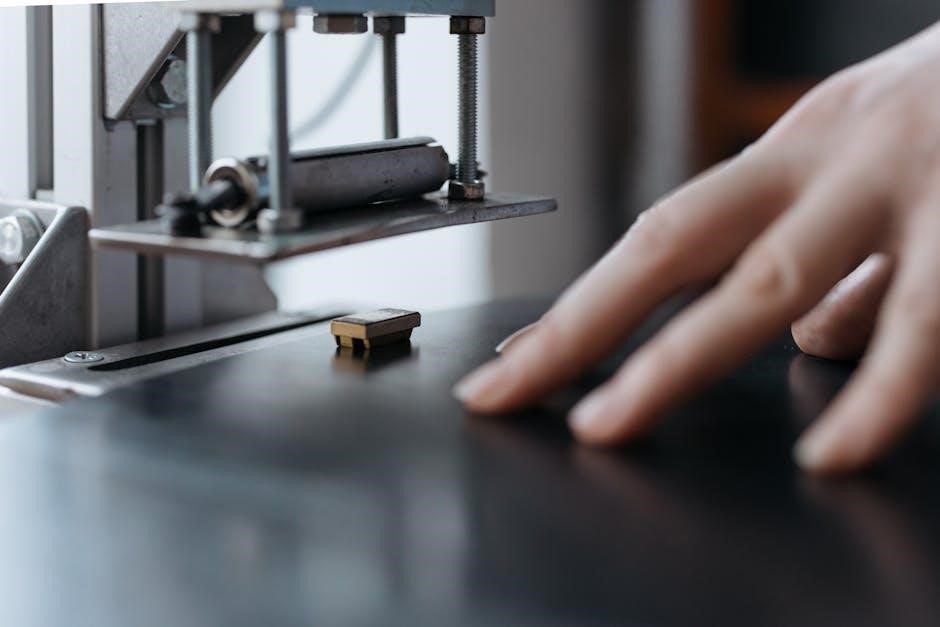
Safety Precautions & Best Practices
Prioritize safety by disconnecting the battery before any adjustments․ Utilize appropriate tools, avoiding over-tightening screws to prevent damage and ensure reliable throttle function․
Disconnecting the Battery Before Adjustment
Before commencing any work on the Mercury throttle control system, a crucial safety step is to disconnect the outboard motor’s battery․ This precaution minimizes the risk of accidental engine start-up during the adjustment process, preventing potential injury to yourself or damage to the engine․ Unexpected engine operation could occur if the throttle is inadvertently engaged while making adjustments to the cable or linkage․
To disconnect the battery, locate the negative (-) terminal and carefully remove the cable․ Securing the cable away from the terminal prevents accidental contact․ It’s also advisable to disconnect the positive (+) terminal for added safety․ Remember to document the original wiring configuration, perhaps with a photograph, to ensure correct reconnection after the throttle adjustments are complete․ This simple step significantly enhances safety and provides peace of mind during the maintenance procedure․
Using Proper Tools for Adjustment
Achieving accurate and safe Mercury throttle control adjustments necessitates employing the correct tools․ Avoid using improvised or ill-fitting instruments, as they can damage components or lead to imprecise settings․ A set of quality wrenches, specifically those designed for marine applications, is essential for tightening and loosening fasteners without rounding off edges․
Furthermore, a screwdriver set with various head types (flathead and Phillips) is crucial for accessing and adjusting the idle adjustment screw and other related components․ Pliers may be needed for manipulating the throttle cable, but exercise caution to avoid crimping or damaging it․ A torque wrench is highly recommended for tightening fasteners to the manufacturer’s specified torque values, preventing over-tightening and potential thread damage․ Investing in the right tools ensures a professional and reliable outcome․
Avoiding Over-Tightening of Screws
Over-tightening screws during Mercury throttle control adjustments is a common mistake that can lead to significant problems․ Applying excessive force can strip the threads in the carburetor or throttle body, rendering the component unusable and requiring costly repairs․ It’s crucial to understand that these screws are typically made of softer metals and are easily damaged․
Instead of relying on sheer strength, utilize a torque wrench set to the manufacturer’s specified torque value․ If a torque wrench isn’t available, tighten the screws until they are snug and then give them only a slight additional turn; A “feel” for proper tightness develops with experience, but erring on the side of caution is always best․ Regularly inspect screws for signs of stress or damage, and replace them if necessary․
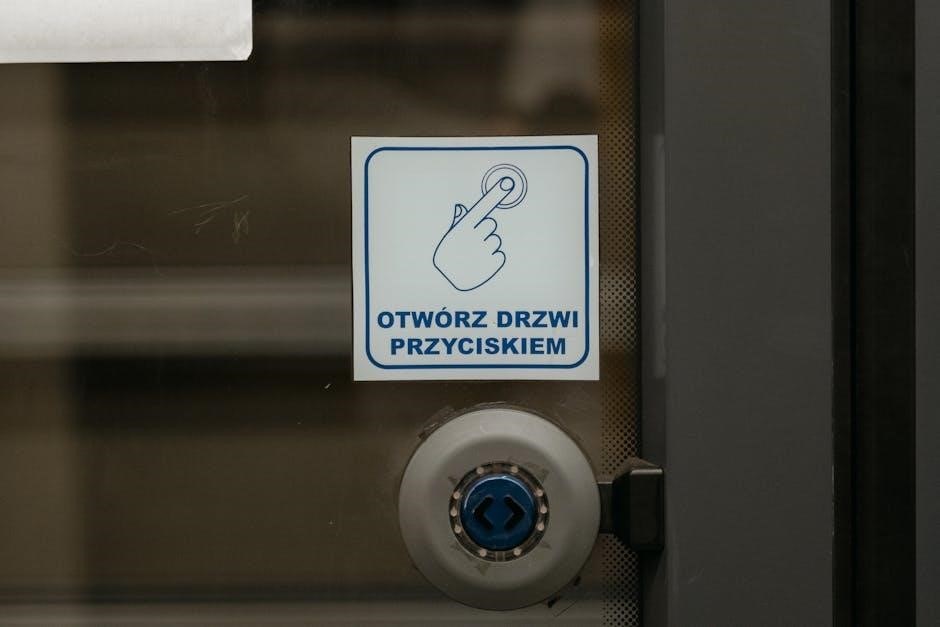
Resources and Support
For technical assistance with Mercury components, email mercuryfsvps․ru․ Local mechanics and online forums offer valuable support and troubleshooting guidance․
Contacting Mercury Technical Support (mercuryfsvps․ru)
When facing complex throttle control issues, directly contacting Mercury Technical Support via email at mercuryfsvps․ru is a highly recommended course of action․ This dedicated support channel provides access to specialized expertise regarding all Mercury outboard systems, including detailed knowledge of throttle mechanisms and adjustments․
Submitting a free-form application in the form of an email is sufficient to initiate contact․ Be prepared to provide specific details about your outboard model, the year of manufacture, and a comprehensive description of the throttle problem you are experiencing․ Including any relevant diagnostic steps you’ve already taken can expedite the troubleshooting process․
Mercury technical staff can offer tailored guidance, potentially resolving the issue remotely or directing you to the appropriate resources for repair․ Expect a detailed response with potential solutions or further investigation steps․
Finding Local Mercury Outboard Mechanics
For hands-on assistance with your Mercury throttle control, locating a qualified local mechanic is often the most efficient solution․ These professionals possess the specialized tools and experience necessary to accurately diagnose and repair complex throttle system issues․ A skilled technician can perform precise adjustments, ensuring optimal performance and safety․
Begin your search by consulting Mercury’s official dealer locator on their website․ This resource provides a comprehensive list of authorized service centers in your area․ Alternatively, online directories and local marine supply stores can offer valuable recommendations․
When selecting a mechanic, prioritize certifications and positive customer reviews․ Inquire about their specific experience with Mercury outboards and throttle control systems․ A thorough mechanic will provide a clear explanation of the problem and a transparent estimate for the repair․
Online Forums and Communities for Assistance
Numerous online forums and communities are dedicated to Mercury outboard motors, offering a wealth of knowledge and support for owners tackling throttle control issues․ These platforms provide a space to connect with experienced enthusiasts and professionals who can offer guidance and troubleshooting advice․
Popular forums often feature dedicated sections for specific Mercury models, allowing you to find information tailored to your engine․ Search existing threads for solutions to common problems, or post your own question to receive personalized assistance․
Remember to provide detailed information about your engine, the symptoms you’re experiencing, and any steps you’ve already taken․ Be respectful of other members and follow the forum’s guidelines․ While online advice can be valuable, always prioritize safety and consult a qualified mechanic for complex repairs․
